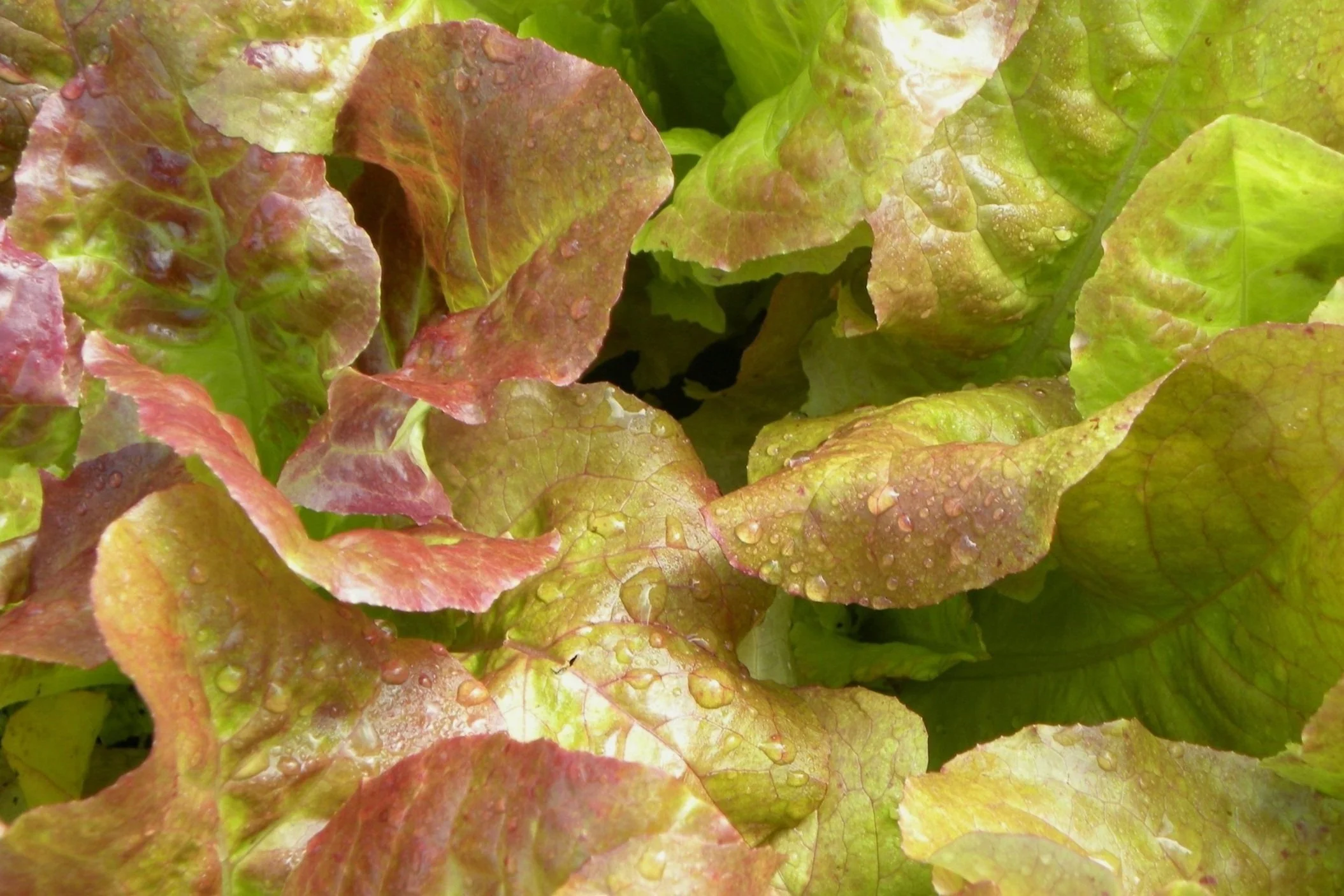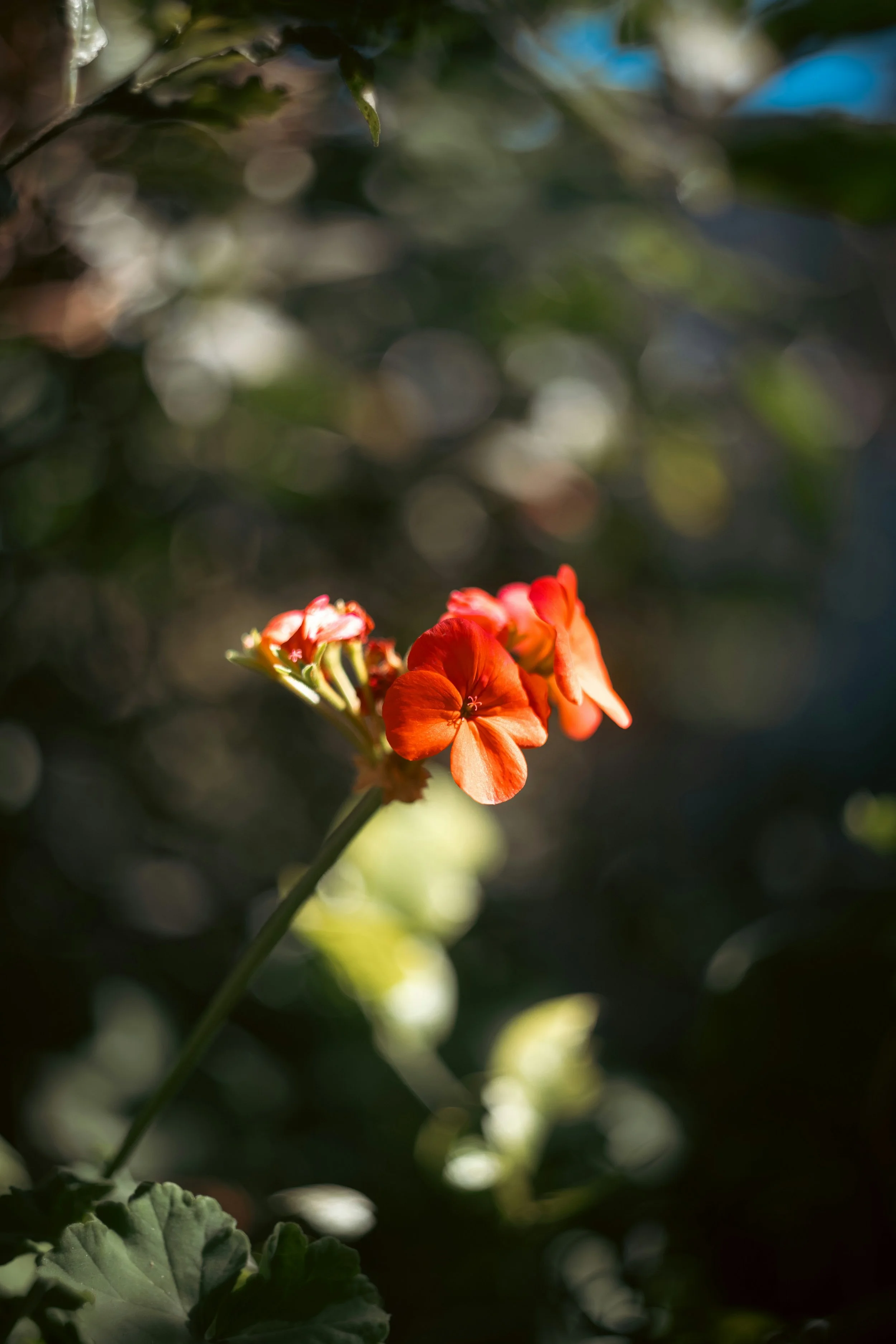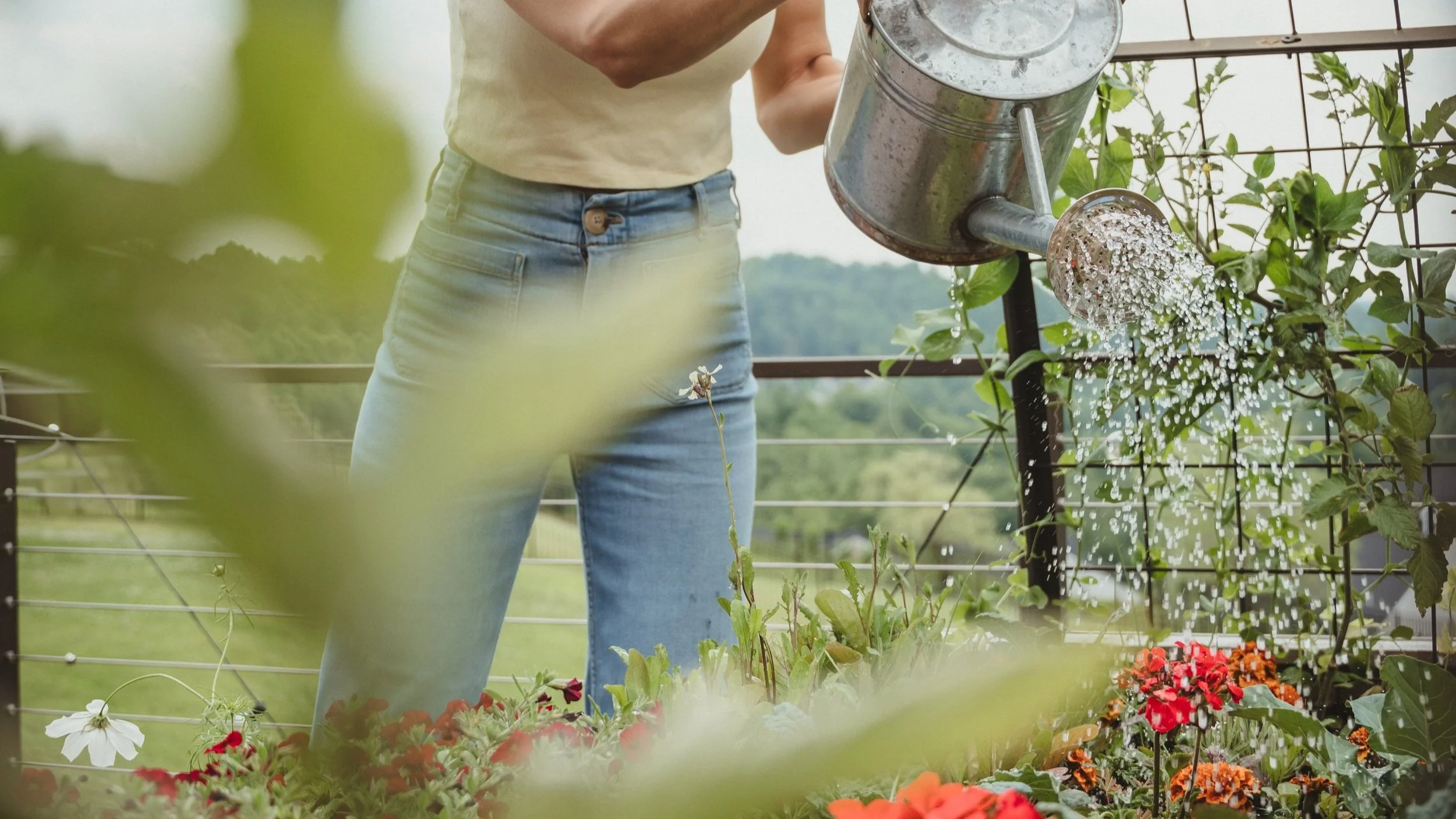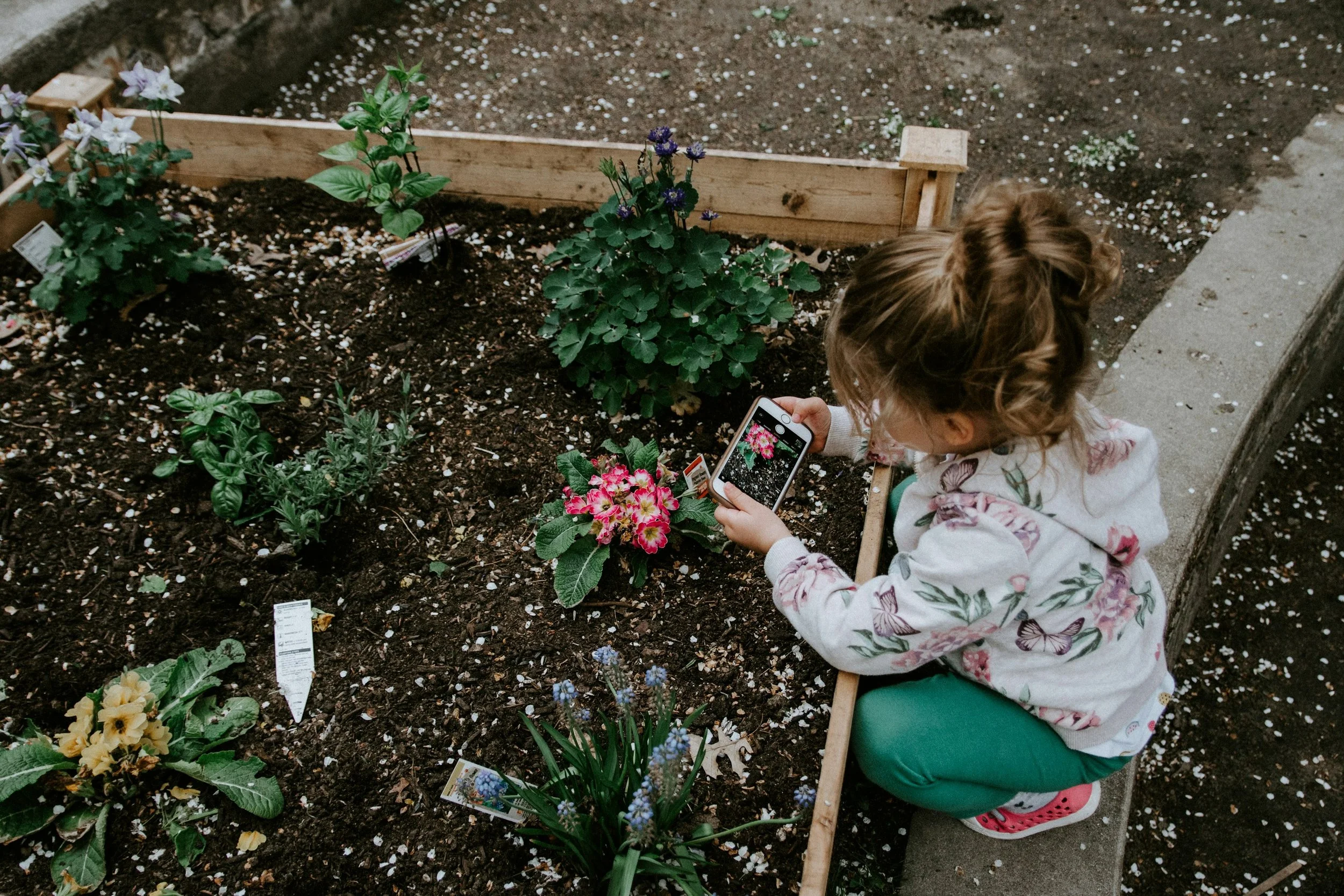How to Start a Kitchen Garden
When my daughter was little, our days were slow and intentional. Everything felt full of wonder, from morning routines to afternoon walks, it all had meaning. When she started school, I naturally returned to the workforce, and life picked up pace. Co-parenting with her father became complicated, I began dating my now-husband, my new career took off, and the invisible load quietly intensified.
The more intense life became, the more I started craving the simplicity we used to live in, a life where presence came naturally. So I stepped down from my corporate job to refocus on long-term personal and career goals, to bring back the slower, more intentional rhythm we had once relished, and be home with my two children.
My nesting instincts quickly surfaced, and I began learning as much as I could about organic gardening. I started out with a few herbs in my most treasured toddler-painted pots, and it quickly grew into something more.
Right after my son was born, my husband built a 4ft x 12ft untreated cedar garden box with a 6ft trellis arch, along with a 4ft x 15ft in-ground garden bed. It’s become a way to share something simple with my kids, while also reclaiming a piece of myself. No pressure, no performance, and most importantly, no toxic pesticides. Just soil, sunshine, and something we were growing together.
While it might just be a small kitchen garden and a few flowers, the way it slows me down is unmatched. There’s something magical about stepping onto my warm deck with my coffee in hand to check on my plant babies.
I love cooking summer meals and creating fun mocktails with my daughter using the herbs we've grown ourselves. The taste of sun-warmed cherry tomatoes right off the vine is divine as well. My daughter and I have such a special time picking our blueberries off our two blueberry bushes and eating chin-dripping pickles from cucumbers that she grows herself! I will cherish our blueberry picking forever.
This guide is for anyone craving a softer, more intentional joy in your life. Whether you're new to gardening, curious about where to begin, or just want a creative way to connect with your husband or kids while feeding your family well, I’ve got you covered.
In this post, I’ll walk you through exactly what a kitchen garden is, what to plant, and how to grow something beautiful—no matter how small your space or how many houseplants you’ve killed.
How to Start a Kitchen Garden
Even if you’ve never grown a single thing or have a record of killing every plant you’ve touched, starting a kitchen garden is totally doable. It doesn’t require acreage, a greenhouse, or chickens... unless you want it to!
It’s simply about growing food that you actually want to eat, in a space you actually have. Whether it’s a pot of herbs on the porch, a raised bed on the deck, or a few planters just outside your kitchen door, it all works!
Kitchen gardening isn’t about perfection or production. It’s about building something meaningful and just for you—a little patch of calm you get to call your own—and it smells like basil. Yum!
In this guide, I’ll explain what a kitchen garden is, how it works, what to plant, and exactly how to start one that fits your space, your meals, and your life.
What Is A Kitchen Garden?
A kitchen garden is a small, intentional garden designed to grow edible plants that you can use daily. Think: herbs for dinner, greens for smoothies and home-grown salads, berries for snacks and yogurt topping, and cherry tomatoes warm from the vine.
Unlike a traditional vegetable garden, a kitchen garden is usually located closer to your home, more curated, and focused on beauty, usefulness, and ease.
You can grow your kitchen garden in:
Raised beds on your patio or deck
Large planters or troughs
A collection of pots near your kitchen door or water source
In-ground garden space with good soil and full sun (6–8 hours a day)
It can be small. It can be wild. It can be full of mistakes. It still counts. That’s the beauty of kitchen gardening.
What To Plant In A Kitchen Garden
This part is where the fun begins. You don’t need to plant it all—just what you’ll actually use and enjoy. This guide is designed to help you choose low-maintenance, pest-resistant, and kid-friendly plants, so you can grow what thrive, without the overwhelm.
Herbs for Every Meal (and Mocktail)
Basil is perfect for literally everything…pesto, pasta, caprese, and basil + strawberry mocktails, you name it. That summer smell? Pure joy. (Summer)
Mint is great for tea, mojitos, cucumber mint spa water, smoothies, salads, and tabbouleh. (Spring + Summer + Fall)
Parsley is perfect in grain bowls, soups, sauces, or on roasted veggies. (Spring + Summer + Fall)
Sage is earthy and grounding. Use in butter, broths, or with roasted squash. (Spring + Summer + Fall)
Lavender repels mosquitoes, makes great syrup, lemonade, and epsom salt bath. (Spring + Summer)
Rosemary is a classic for potatoes, chicken, or infused oils. (Spring + Summer + Fall)
Thyme is great in soups and herb butters. Flowers attract pollinators. (Spring + Summer + Fall)
Chives are kid-friendly to snip and eat. Adds mild onion flavor. (Spring + Summer + Fall)
Easy Salad & Cooking Greens
Leaf Lettuce is tender, grows fast, and loves cool temps. Harvest again and again—just snip and repeat. (Spring + Fall)
Arugula is peppery, fast-growing, and happy in spring and fall. Use row cover if flea beetles show up. (Spring + Fall)
Swiss Chard is gorgeous and heat-tolerant. Grows like a rainbow bush that never quits. (Spring + Summer)
Kale (Dwarf or Curly) is cold-hardy, forgiving, resilient. Minor pest pressure, but tough enough to handle it. (Spring + Fall)
Mustard Greens (Mizuna or Red Giant) are spicy varieties that repel pests naturally. Adds a bold kick to salads or sautés. (Spring + Fall)
Spinach is fast and versatile. It’s great for eggs, smoothies, or salads. (Spring + Fall)
Veggies & Snackables
Green Beans are easy and rewarding. Sweet when picked young and perfect for sautés or eating straight off the vine. Pole beans love a trellis. (Late Spring + Summer)
Sugar Snap Peas are crisp, sweet, and great for spring or early fall. (Spring + Fall)
Cucumbers are refreshing and productive. Use a bush variety or trellis. Slice, pickle, or add to infused water. (Summer)
Cherry Tomatoes burst with sweetness. Great for snacking, pasta salads, or roasting. (Summer)
Lunchbox Peppers are small, sweet, and perfect raw or roasted.
Rainbow Carrots can be colorful, nutrient-dense, and toddler-dig approved. (Spring + Fall)
Radishes are super fast-growing, perfect for snacking or quick pickling. (Spring + Fall)
Sweet, and Resilient Fruits
Blueberries are hardy with the right soil and are best grown in pairs. (Summer)
Strawberries (Alpine or Ever-bearing) are easy in planters or hanging baskets. (Spring + Summer)
Thornless Raspberries fruit year after year and are sweet, easy, and fun to pick. (Summer + Early Fall)
Mini Melons are perfect for full-sun spots with vine space. (Late Spring + Summer)
Cucamelons are mini watermelon look-alikes with a citrusy crunch. (Summer)
Don’t forget the garden’s tiniest heroes—beneficial insects! Tuck in flowers like calendula, borage, nasturtiums, dill, or alyssum around your veggies to invite pollinators and protectors. These attract bees and ladybugs, which help keep pest pressure down naturally.
Try a ladybug kit from Insect Lore and raise ladybugs with your kids, then release them into your garden. Bonus: plant pollinator-friendly flowers nearby to keep your ladybugs around.
How To Plant A Kitchen Garden
These tips will help you create a beautiful, productive space you’ll use. Think of this as the part where intention meets action. The magic is in the planning—so you’re set up for calm mornings, easy harvests, and lots of hands-in-the-dirt joy.
1. Start Small and Keep It Close
Use pots, planters, or a small raised bed right off your deck or patio. A good rule of thumb is that you are more likely to tend and harvest what you grow when it’s within arm’s reach of your kitchen or daily routine.
2. Find the Right Location
Your garden’s success starts with the right spot. The ideal space gets at least 6 hours of full sun daily, especially morning sun. On a sunny day, watch the area you're considering. Set a timer or note the time when it first gets direct sun. Next, track how long it stays in direct light before shade rolls in. If it hits 6+ hours total, you’re golden. Another option is to take photos at different times of day and compare the light. If you’re torn between spaces, here’s a quick formula to help decide:
60% sunlight
20% water access
20% accessibility
3. Know Your Growing Season
Your planting schedule should follow the temperature, not just the calendar.
Here’s a simple cheat sheet:
Cold Season: below freezing, snow or frost guaranteed
Cool Season: 35–65°F, frost still likely
Warm Season: 65–85°F, frost-free and ideal for most plants
Hot Season: 85°F+, heat-loving crops thrive
Look up your area’s average monthly highs and frost dates by Googling your ZIP code + “gardening zone” or “first frost”. This helps you know when to plant and what will thrive in your location.
4. Fill With the Right Soil
Healthy soil means happy plants. Use a 1:1:1 ratio of organic compost, high-quality topsoil (no fertilizer added), and an aeration material like coconut coir or paver sand (not play sand). Your soil should feel fluffy, not sandy or compact. It should hold together slightly, then crumble easily when squeezed. For more information on understanding your soil needs, click here.
5. Water Smart (Not Just Often)
Shallow watering can lead to shallow roots. Instead, water deeply and less often. When you water, aim to soak the soil about 6 inches deep. You’ll know you’ve done it right if the water doesn’t run off the surface and the soil feels damp all the way down. You can use your finger or a wooden skewer to test the depth. You don’t need to water again for a couple of days, unless the weather is very hot.
Tip: Morning watering is ideal, so the roots drink it up before the sun gets too hot. This will also prevent disease.
6. Make It Easy to Reach
Keep your layout user-friendly. Group plants with similar needs together. Place taller ones in the back or near a trellis. Think of it like arranging your pantry—functional, accessible, and designed for ease.
7. Grow What You’ll Actually Eat
Stick with herbs, fruits, and veggies your family already loves. Is it fresh mint for mojitos? Basil for pizza night? Tomatoes for bruschetta? Or maybe it’s fun rainbow carrots for their lunchbox? Whatever it looks like for you, my wish is for it to be a little joy-filled, edible snack and herb garden that adds organic, whole food and flavor to your meals.
8. Invite the Kids!
Give them a little patch to tend—or just let them pick, dig, and snack. Let it be fun, messy, and snacky. They won’t remember perfect rows or Pinterest-worthy harvests—they’ll remember that they were in the dirt with you, learning, laughing, and growing something real.
9. Add Flowers to Attract Pollinators
If you want to kick it up a notch, tuck in some blooms like calendula, nasturtiums, alyssum, and marigolds. These flowers invite bees, butterflies, and especially ladybugs. These beneficial insects will help your plants thrive, and your kids will love them!
What Will You Grow in Your Kitchen Garden?
What you grow doesn’t have to be complicated. Maybe it’s just one pot of basil on your porch. Maybe it’s a raised bed tucked beside your house. Maybe it’s the kind of garden your toddler helps water in pajamas with muddy knees. Whatever it looks like, the beauty isn’t just in the harvest—it’s in the rhythm it brings to your days.
A kitchen garden invites you to slow down, touch the soil, and reconnect with the food that nourishes your family. It becomes a space that smells like mint and lavender, and where meals start with what you grew together.
So get your hands a little dirty. Release the need for perfection. Let your garden be wild, soft, beautiful, and entirely yours.
And don’t forget to grab some ladybugs and take all the cute pics—because the memories you plant will grow, too.
-M.












